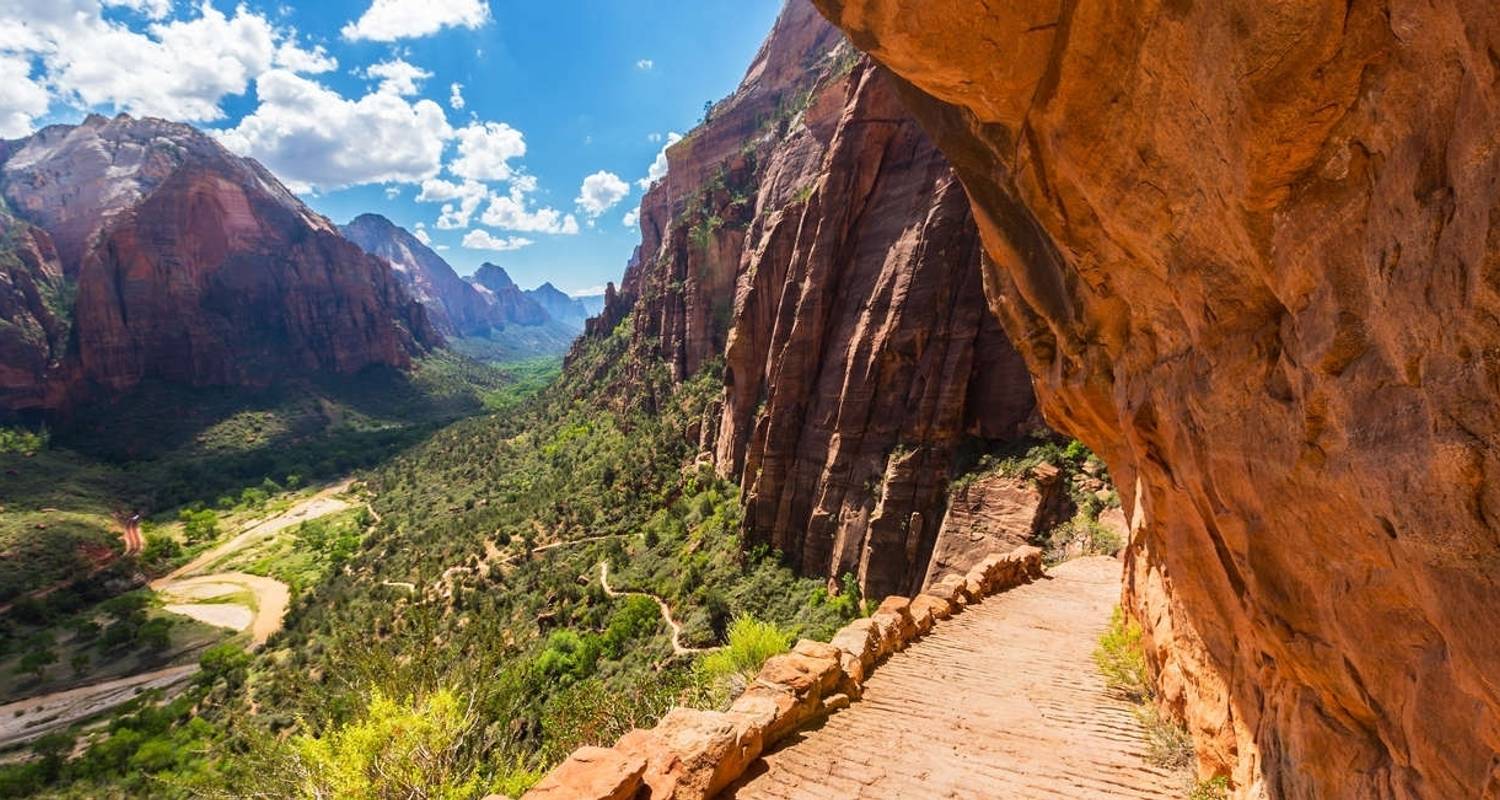The American West is a vast, diverse region that holds a special place in the hearts of travelers worldwide. Its unique combination of natural beauty, rich cultural history, and vibrant cities makes it a dream destination for adventurers and explorers. Spanning from the Pacific coastline to the rugged interior of deserts, mountains, and forests, the American West promises a rich, multifaceted experience.
This blog will take you on a journey through the most iconic destinations in the West, uncovering its striking natural landscapes, vibrant cities, and cultural heritage. From the breathtaking majesty of the Grand Canyon to the cosmopolitan charm of San Francisco, the American West offers a multitude of experiences that cater to every type of traveler.
1. The Grand Canyon: Nature’s Masterpiece
Overview
No exploration of the American West is complete without visiting the Grand Canyon, one of the world’s most awe-inspiring natural wonders. Carved over millions of years by the Colorado River, this immense canyon stretches 277 miles long, up to 18 miles wide, and reaches depths of over a mile.
Why Visit
Stunning Views: The Grand Canyon offers unparalleled vistas, especially at sunrise and sunset when the colors of the canyon walls change dramatically.
Hiking and Exploration: For the adventurous, hiking the canyon’s numerous trails provides an up-close look at its unique geological formations. The Bright Angel Trail and South Kaibab Trail are among the most popular.
Rafting the Colorado River: For a more immersive experience, consider rafting along the Colorado River, which offers a thrilling way to see the canyon from its base.
Pro Tips
Best Time to Visit: Spring and fall offer cooler temperatures and fewer crowds.
Accommodation: The South Rim is the most accessible and offers a variety of accommodations, including campsites and lodges.
2. Yosemite National Park: Majestic Wilderness
Overview
Located in California’s Sierra Nevada Mountains, Yosemite National Park is renowned for its towering granite cliffs, cascading waterfalls, and ancient sequoia trees. It spans nearly 1,200 square miles of pristine wilderness, offering countless opportunities for hiking, rock climbing, and wildlife viewing.
Why Visit
Iconic Landscapes: Yosemite Valley is home to Half Dome and El Capitan, two of the most famous rock formations in the world. These massive granite structures attract climbers and photographers alike.
Waterfalls: Yosemite is famous for its spectacular waterfalls, including Yosemite Falls, the tallest in North America. The park also boasts Bridalveil Fall and Vernal Fall, which provide stunning photo opportunities.
Wildlife and Flora: The park’s biodiversity includes black bears, bobcats, and mule deer, as well as ancient sequoias, some of which are over 3,000 years old.
Pro Tips
Best Time to Visit: Spring is the best time to witness Yosemite’s waterfalls at their fullest. Summer months can be crowded, but they offer warm weather for hiking and camping.
Permits: If you’re planning to hike the Half Dome, make sure to secure a permit in advance as they are limited and highly sought after.
3. San Francisco: A Cultural Metropolis
Overview
San Francisco is one of the most iconic cities in the American West. Known for its hilly terrain, foggy mornings, and vibrant cultural scene, the city is a hub of innovation and creativity. It’s home to the Golden Gate Bridge, Alcatraz Island, and a diverse array of neighborhoods.
Why Visit
Golden Gate Bridge: One of the most photographed landmarks in the world, the Golden Gate Bridge offers stunning views of the San Francisco Bay. Walking or biking across the bridge is a must-do experience.
Fisherman’s Wharf and Alcatraz: For history enthusiasts, a trip to Alcatraz Island, once a notorious federal prison, provides a fascinating glimpse into America’s past. Fisherman’s Wharf offers delicious seafood and stunning views of the bay.
Diverse Neighborhoods: San Francisco’s neighborhoods, like Chinatown, Haight-Ashbury, and the Mission District, reflect its cultural diversity. Each area has its own unique flavor, from the bohemian vibes of Haight-Ashbury to the delicious Mexican cuisine in the Mission.
Pro Tips
Getting Around: San Francisco’s iconic cable cars are a fun and practical way to navigate the city’s steep streets. Public transportation options like the BART system are also convenient for getting around the Bay Area.
Best Time to Visit: Fall is typically the best time to visit San Francisco, as the weather is mild and the summer crowds have dissipated.
4. Las Vegas: The Entertainment Capital of the World
Overview
Las Vegas, located in the heart of the Nevada desert, is a city that needs no introduction. Known for its extravagant casinos, world-class entertainment, and vibrant nightlife, Las Vegas is a playground for adults. But beyond the glitz and glamour of The Strip, the city also offers opportunities to explore natural wonders like the Red Rock Canyon and the Hoover Dam.
Why Visit
The Strip: Las Vegas Boulevard, also known as “The Strip,” is home to some of the most iconic casinos and hotels in the world, including the Bellagio, MGM Grand, and Caesars Palace. Visitors can enjoy high-end shopping, gourmet dining, and world-renowned shows.
Entertainment: Las Vegas is famous for its shows, ranging from Cirque du Soleil performances to concerts by top global artists.
Outdoor Adventures: Just outside the city, you can escape the neon lights for the natural beauty of Red Rock Canyon or take a day trip to the Hoover Dam, one of the greatest engineering feats in U.S. history.
Pro Tips
Best Time to Visit: Fall and spring offer the best weather, with temperatures being cooler than the scorching summer months.
Off-The-Strip: Explore downtown Las Vegas and Fremont Street for a taste of the city’s history and old-school Vegas charm.
5. Yellowstone National Park: America’s First National Park
Overview
Established in 1872, Yellowstone National Park is the oldest national park in the United States and one of the most famous in the world. Located primarily in Wyoming, with portions extending into Montana and Idaho, Yellowstone is known for its geothermal features, diverse wildlife, and vast wilderness.
Why Visit
Geysers and Hot Springs: Yellowstone’s geothermal features are a major draw, particularly Old Faithful, which erupts with stunning regularity. The park is also home to colorful hot springs, such as the Grand Prismatic Spring.
Wildlife: Yellowstone is a haven for wildlife, including grizzly bears, wolves, bison, and elk. It’s one of the few places in the U.S. where you can see these animals in their natural habitats.
Hiking and Exploration: With over 900 miles of trails, Yellowstone offers endless opportunities for hiking, from easy boardwalks around geysers to challenging backcountry trails.
Pro Tips
Best Time to Visit: Summer is the most popular time to visit, but fall is also a great option with fewer crowds and stunning fall foliage.
Wildlife Safety: If you’re planning to hike or explore, familiarize yourself with bear safety practices and keep a safe distance from all wildlife.
6. Monument Valley: The Heart of the Navajo Nation
Overview
Located on the border of Arizona and Utah, Monument Valley is one of the most iconic and recognizable landscapes in the American West. Known for its towering sandstone buttes and sweeping desert vistas, the valley is sacred to the Navajo people and has been featured in numerous films and TV shows.
Why Visit
Cultural Significance: Monument Valley is part of the Navajo Nation, and visitors can take guided tours with Navajo guides to learn about the history and culture of the area.
Breathtaking Scenery: The dramatic landscape of Monument Valley, with its towering rock formations and wide-open spaces, is perfect for photography and exploration.
Outdoor Activities: In addition to scenic drives, visitors can enjoy hiking, horseback riding, and stargazing in this remote desert landscape.
Pro Tips
Best Time to Visit: Spring and fall offer pleasant temperatures for exploring the valley. Summers can be extremely hot, and winters can bring cold and snow.
Guided Tours: Consider taking a guided tour with a Navajo guide for a deeper understanding of the land’s cultural and historical significance.
7. Los Angeles: The City of Angels
Overview
Los Angeles, the entertainment capital of the world, is a sprawling metropolis known for its beaches, cultural diversity, and, of course, Hollywood. From the glitz of Beverly Hills to the laid-back vibes of Venice Beach, Los Angeles has something for everyone.
Why Visit
Hollywood: No trip to LA is complete without visiting Hollywood. Walk along the Hollywood Walk of Fame, tour movie studios, or catch a glimpse of the iconic Hollywood sign.
Beaches: LA is home to some of the most famous beaches in the world, including Santa Monica and Malibu. Whether you’re looking to surf, sunbathe, or people-watch, the city’s beaches have something to offer.
Art and Culture: Los Angeles boasts world-class museums like the Getty Center, the Los Angeles County Museum of Art (LACMA), and the Natural History Museum of Los Angeles.
Pro Tips
Best Time to Visit: Los Angeles enjoys pleasant weather year-round, but spring and fall are ideal for avoiding the summer crowds.
Traffic: LA is notorious for its traffic, so plan accordingly. Consider using public transportation, ride-sharing apps, or renting a bike for exploring the beach areas.
8. Death Valley: A Desert of Extremes
Overview
Death Valley National Park, located in eastern California, is one of the hottest and driest places on Earth. Despite its harsh environment, Death Valley offers a unique beauty with its otherworldly landscapes of salt flats, sand dunes, and rugged mountains.
Why Visit
Unique Landscapes: Badwater Basin, the lowest point in North America, and the Mesquite Flat Sand Dunes provide dramatic desert scenery. Zabriskie Point offers a stunning view of colorful, eroded badlands.
Extreme Conditions: Death Valley is a place of extremes—intense heat in the summer, but also fascinating natural phenomena such as wildflower blooms in the spring.
Stargazing: The park’s remote location makes it an excellent destination for stargazing. Its dark skies offer some of the best views of the Milky Way in the continental U.S.
Pro Tips
Best Time to Visit: Winter and early spring are the best times to visit due to cooler temperatures and the possibility of wildflower blooms.
Preparation: Be sure to carry plenty of water and avoid strenuous activities during the hottest part of the day.
9. Seattle: Gateway to the Pacific Northwest
Overview
Seattle, known for its thriving tech industry and coffee culture, is the largest city in the Pacific Northwest. Surrounded by water, mountains, and evergreen forests, it’s a perfect blend of urban sophistication and outdoor adventure.
Why Visit
Space Needle: One of the most recognizable landmarks in Seattle, the Space Needle offers panoramic views of the city and the surrounding natural beauty.
Pike Place Market: This historic market is a must-see, famous for its seafood, fresh produce, and unique crafts. It’s also home to the original Starbucks.
Mount Rainier: Just a short drive from the city, Mount Rainier offers incredible hiking and skiing opportunities. The towering volcano is a stunning backdrop to the city.
Pro Tips
Best Time to Visit: Summer is the best time to visit Seattle, as the weather is warm and sunny. Fall also offers beautiful foliage and fewer crowds.
Outdoor Activities: Seattle is a great jumping-off point for exploring the Olympic Peninsula, the San Juan Islands, and the Cascade Mountains.
Conclusion: The American West Awaits
The American West is a region of extraordinary beauty, history, and diversity. Whether you’re drawn to the dramatic landscapes of national parks like the Grand Canyon and Yosemite, the vibrant cities of San Francisco and Seattle, or the cultural heritage of Monument Valley and Las Vegas, there’s something for everyone. From desert adventures to urban explorations, the West offers a journey unlike any other, filled with unforgettable sights and experiences.









